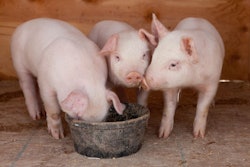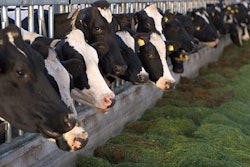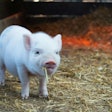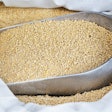
Why is it that there is a maximum for fava beans but none for corn?
Now that we have gone through all the basics of setting up a least-cost formulation problem for the computer software program to solve for us, we can safely click that “calculate” or “solve” button.
Assuming our preparatory work was done correctly, we should be looking at a feasible solution – one where ingredients are used at such levels as those required by the nutrient and ingredient constraints we imposed previously. But, before we start examining everything in detail, we need to discuss the issue of decimals.
Here is a simple question: Is lysine (nutrient) at 1.0% alright or is 0.99% also good enough? The same problem could be asked from the optical angle of ingredients. Say, would you prefer a formula with 0.35% L-lysine HCl or you would not mind one with 0.3499%. The reason these questions are asked is because someone or something (a machine) will have to manufacture these diets. And, at the feed mill level, it is always practicality that prevails. For example, most cereal conveyor systems can shut off with an error of minus or plus 0.05%, that is if you require 100 kg, the machinery will add anything from 95 to 105 kg. More sophisticated – and even more expensive – equipment will minimize this deviance from the target, but this is something the formulator (the person in front of the computer) must know beforehand. And, when it comes to micro-ingredients – unless there is another micro-dispensing system – the human operator will cringe at too many decimals when these will have to be done by hand.
Two options are available to formulators
The first option is to formulate using exact values for minimum and/or maximum constraints for all required nutrients, and allow ingredients supplying these nutrients to float as they desire. This allows the least-cost formulation option. In this case, we have too many decimals appearing in the ingredients list, but we assume all nutrient specifications are on target. The latter assumption ignores that, most of the time, the actual ingredients have not been assayed for all nutrients present, and even laboratories have acceptable analytical variation limits. Not to mention, we never feed the proverbial “average” animal, we just shoot at best for the majority of the population to be covering its needs by adjusting its feed intake.
This approach requires a reality check. This involves a second person, or the computer using a separate software program, to sit down and fix those decimals. This means the exact nutrient values will be changed when L-lysine HCl (the ingredient) is brought back to half percentage point steps to suit the type of scale used in the feed mill. Or that wheat added at 0.25% will be eliminated completely, casually being replaced by the major cereal. At the end, we have a so-called production formula where ingredient inclusion rates match reality. This becomes less of a problem when large feed mills prepare batches of many tons but, in smaller installations, production formulas are a must.
The second option, and the one followed by most experienced nutritionists, is the one whereby sheer experience nutrient specifications are placed within specific but loose limits. Say, lysine can be from 0.95% to 1.05%, whereas by hand or by special functions in the computer software program (the more expensive ones provide such function), each ingredient is added at predetermined inclusion level steps, with individual figures for each one. In the end, the computer presents the final production formula that meets the nutrient limits imposed. Now, and always, the human operator will check whether the deviations in nutrient values are too many or too far away from the threshold of acceptance each one of us has established. For example, we might not object to seeing lysine at 0.99% when the target was 1.0%, but if all amino acids were to be at 0.05 percentage points less, then we might want to rethink the whole limits exercise.
In conclusion
It is up to each individual feed professional to decide how to arrive at the required outcome – the production formula. Working in isolation without taking into account the abilities of the feed plant might be alright if a generic formula is prepared, letting each feed plant decide what needs to be adjusted to get to the production formula. In other cases, it might be quicker if a production formula is prepared at the first instance, especially if the same person does both jobs.

















